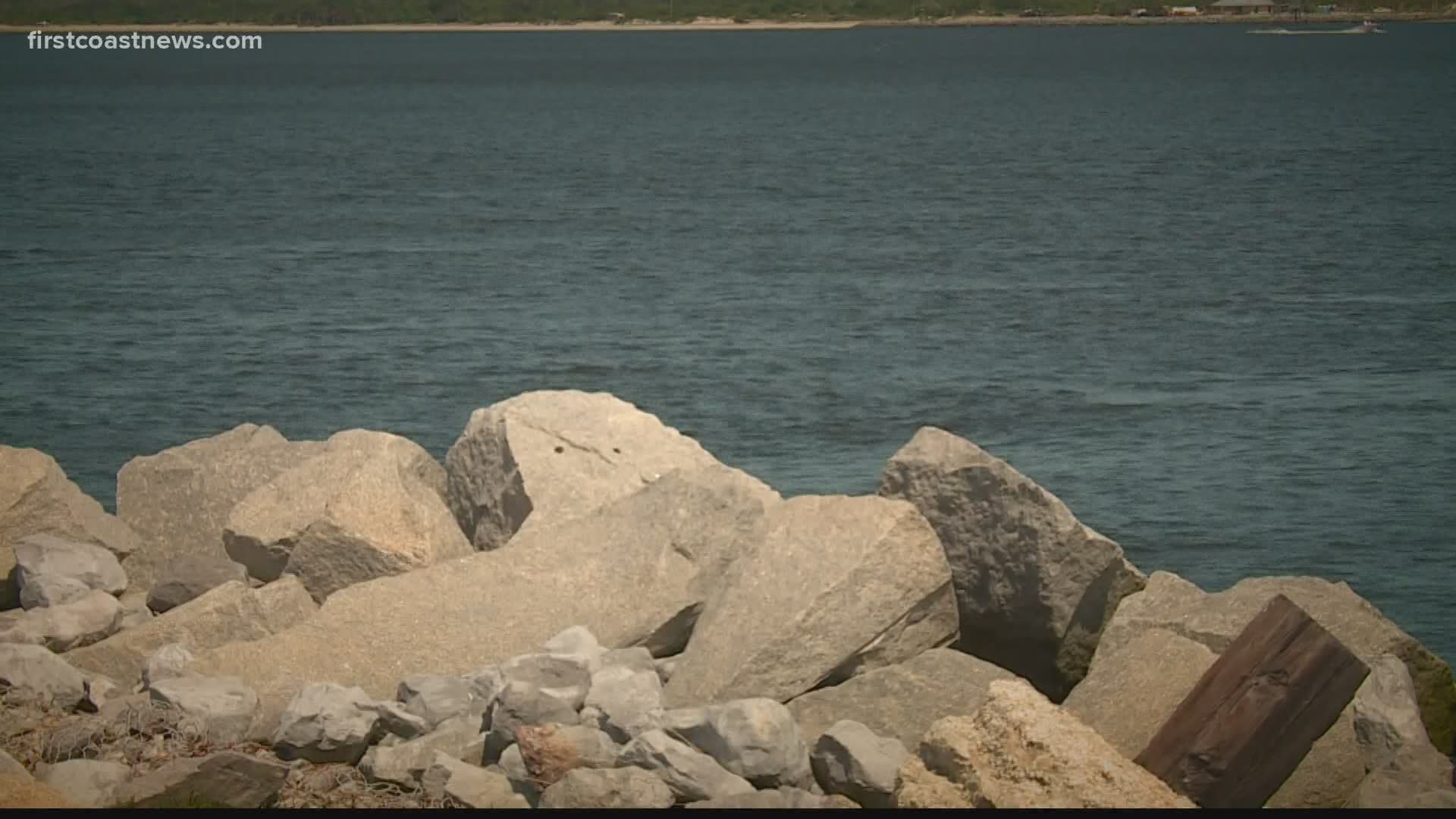JACKSONVILLE, Fla. — A rising tide may lift all boats, but projections show tides along the First Coast are going to rise and keep rising.
The US Army Corps of Engineers projects sea levels could increase by up to seven feet by the end of the century at Naval Station Mayport.
It is a future that could imperil the First Coast's military operations and the region's economy.
Coastal engineers have studied the projections as base personnel and the Department of Defense plan efforts to make the base resilient to rising sea levels.
“We have basically 100 years of record associated with the tide gauge at Mayport,” Erik J. Olsen, a coastal engineer tells First Coast News.
Olsen has been collecting data from the NOAA’s tidal gauge at Naval Station Mayport.
“What this tells us is that yes indeed, something is happening different,” Olsen said.
Data from the past 100 years shows an average of one foot of sea-level rise per century, but numbers from the past 20 years tell a different story.
“If you look at the last 15 years, you get 2.6 feet per century. If you look at the last 10 years of data, you get something in the magnitude of 3.7 feet per century,” Olsen explained.
Mayport is located in one of the most at-risk parts of Florida’s coast with projections showing the naval station could lose more than half its current land to newly tidal zones
One possible defense against the rising tide includes fortifying the dune system.
Heather Hahn, natural resources manager at Naval Station Mayport, has planted 7,000 sea oats across seven acres of beach to keep the dunes healthy.
However, beach erosion has been aggravated by hurricanes.
“After [Hurricane] Mathew, it was estimated that I lost about 10,000 cubic yards of sand, which is a lot of sand, but it wasn’t enough to be considered critical,” Hahn said. "If you have a healthy dune system and a healthy beach, you have that buffer from the storm and the ocean.”
Hahn explained their dune system is still considered robust by the US Army Corps of Engineers.
Rick Geshwiler, a member of the asset management branch of Naval Station Mayport, said as new buildings go up, so does their elevation to help prevent future flooding.
“[In the past three years], we’ve built about $250 million of new buildings on the base," Geshwiler said. "So we’re forward-looking in all these buildings have a lifespan of 70 years or more."
The Department of Defense has been tight-lipped about the impact of flooding on existing installations, and how it might impact their long-term viability.
“Military installations are ordered to look at sea-level rise, they’re taking it into consideration,” Olson explained.
An executive order from the White House says the Department of Defense has to submit a climate risk analysis plan by the end of May. Rising seas are just one of many climate challenges facing the U.S. military.
Keeping Mayport’s operations online will require, literally, holding back the tide.
“What we can tell them is, 'Yes indeed it's happening. It’s not hypothetical,'” Olson said.

